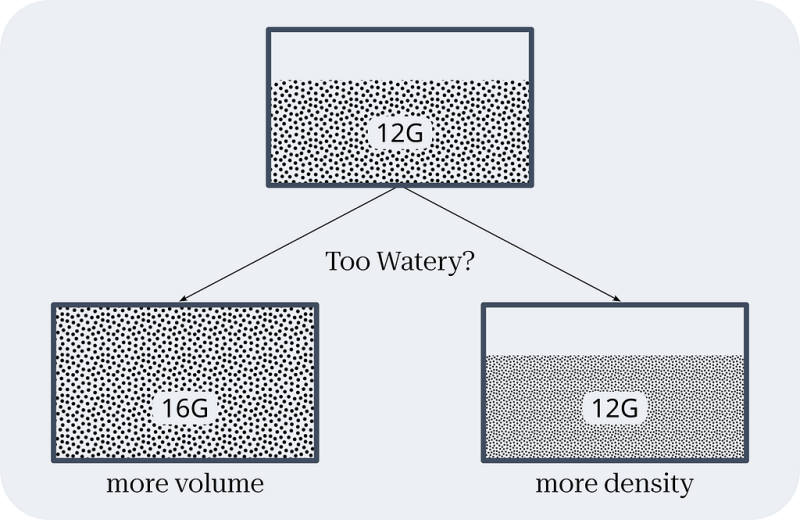I’ve had Flair Neo manual press for 4 years now and it has been producing perfect espressos for me every morning and it’s the best way to get your morning coffee.
Manual espresso machines have some great advantages:
- Very cheap — as low as 100$.
- Low maintenance.
- No warmup and quick setup.
- Produce magnificent results that you have full control over.
All you need is to spend couple of hours to understand the process and this guide should be a good start.
There are generally 2 types of presses available but it’s mostly the same thing:
In essence, manual press replaces all of the complex parts of an espresso machine with human muscles and a single device called the brew head:
A lever mechanism is used to press the piston down onto hot water which passes ground coffee and creates delicious espresso. Pretty simple! Here’s how to get into it.
Get the beans
Don’t bother with pre-ground coffee. We need whole roasted beans.
Start with medium or Vienna (mid-dark) roast as these much easier to work with. Make sure the roast is fresh. Week old roast is peak quality.
Coffee beans oxidize so it’s freshness is not only important for flavor but for the whole espresso process 👇
Press the beans
This is where everything comes together and before we grind our beans we need to understand the press mechanics.
The key feature of Espresso is pressure which makes the hot water much more chemically reactive. This water goes through the bean particles and extracts the tasty out of them very effectively with extra features like crema.
The challenge here is managing of pressure and it’s delivery method. There are 3 parts that control pressure:
- The basket itself — it has space and holes int it and we can’t change anything about it.
- The grind level — smaller particles compress harder creating more pressure.
- The particle volume — more particles take longer to get through creating more pressure.
So, for perfect espresso we need to nail the grind level and volume.
Too coarse grind or too little volume will not create enough resistance and result in watery espresso. It’ll just plop out quickly without pulling the taste out our beans.
The opposite will create stuffy espresso resulting in sweat, swearing and eventual loss of precious coffee beans as you get defeated by the immovable lever.
Here’s a quick illustration:
It’s a balancing game.
The Dial-in
Finding the perfect balance is called a “dial in”. As each bean bag is slightly different we need to adjust our grind level and volume for a perfect dial in.
Good news is you only need to dial in once per bag as long as you don’t leave beans to oxidize for too long.
Dark roast beans break easier and produce more uniform, smaller particles. So the darker roast is always stuffier and easier to work with.
With bean grounds in hand, start with a desired volume like 16 grams (known as double shot) and keep reducing the grind level until the press is no longer watery but not too stuffy either.
So if 16G press is coming out too watery, reduce the grind size or raise to 18G. Rinse and repeat.
It’s hard to explain the sweet spot but you’ll definitely feel it. Pressing a perfect dial-in manually feels very satisfying, you can’t miss it.
Tips on setting up gear
There are 2 critical gear parts that impact this whole process — basket tamping and water head temperature.
First, the ground coffee particles need to be distributed evenly in the basket. For that a swish-swoosh tool is used like a paperclip (professionally called WDT) to swish freshly ground clump of bean stuff around to give them an even distribution of space.
Then, a tamper is used to press it snug together. Press hard and aim for horizontal level.
Then, the cylinder is metal which will cool down freshly boiled water rapidly by stealing it’s heat. This means in reality you’re pressing coffee with 80C water instead of desired 95+C. So, just preheat the basket.
I drop it into the water kettle and pull it out with a pair of tongs before each press 👇
To reiterate:
- Get freshly roasted medium-dark beans.
- Decide on volume e.g. 16G.
- Preheat the components.
- Grind multiple grind sizes.
- Test each grind level until output is not _watery_ nor _stuffy_ .
- Write down your settings for easy repetition.
Troubleshoot
Dial-in is too watery all of a sudden:
- Your beans are no longer fresh. Increase volume or grind.
- Tamper is uneven or incorrect.
- Grinder is producing uneven grind.
Dial-in is too stuffy:
- Dial-in is probably incorrect. Redial.
- Grind can be too fine and clog portafilter holes. Reduce grind and increase volume.
Can’t dial in.
- Each basket has ideal volume range try to change the volume.
- Grinder is unreliable. Clean the burs to get rid of coffee oils and try again. If it persists consider investing into a grinder with better burs.
Wrap up and other improvements
With all that you can continue to improve espresso flavor through less critical aspects that can impact the flavor.
Measure water throughput as certain ratios like 1g of beans to 2ml of water result in the best flavors. For this, put a scale under your cup and press until your cup weights twice the amount of beans you’re using, i.e. 32gs for 16g of beans.
Pull over a cold object. Pouring fresh espresso over cold metal piece is a relatively new technique to extract more flavors.
Happy pressing!






Top comments (1)
I was trying to create an inforgraphic in inkscape but just couldn't condense the information in satisfying manner so here's a blog post instead!